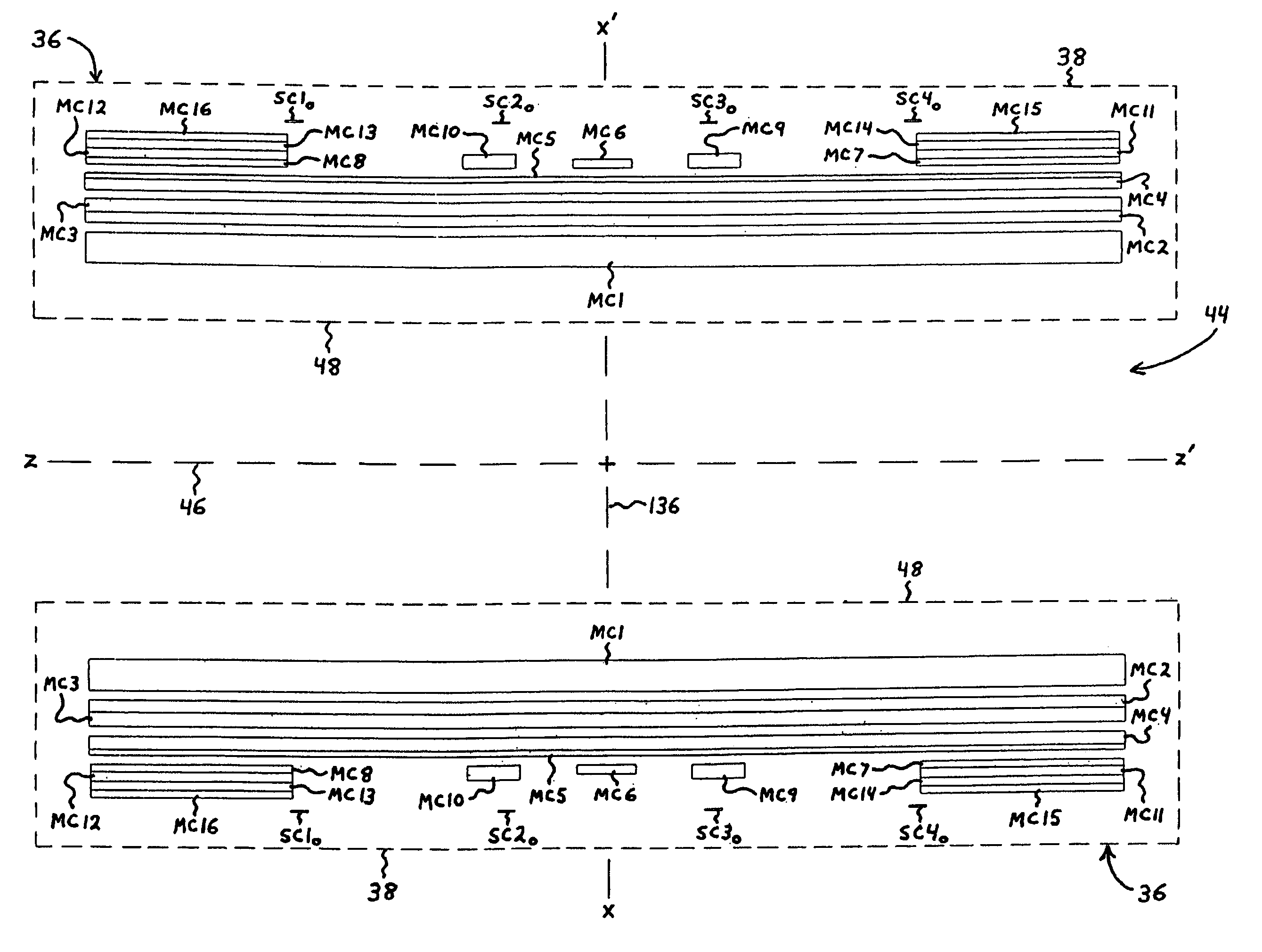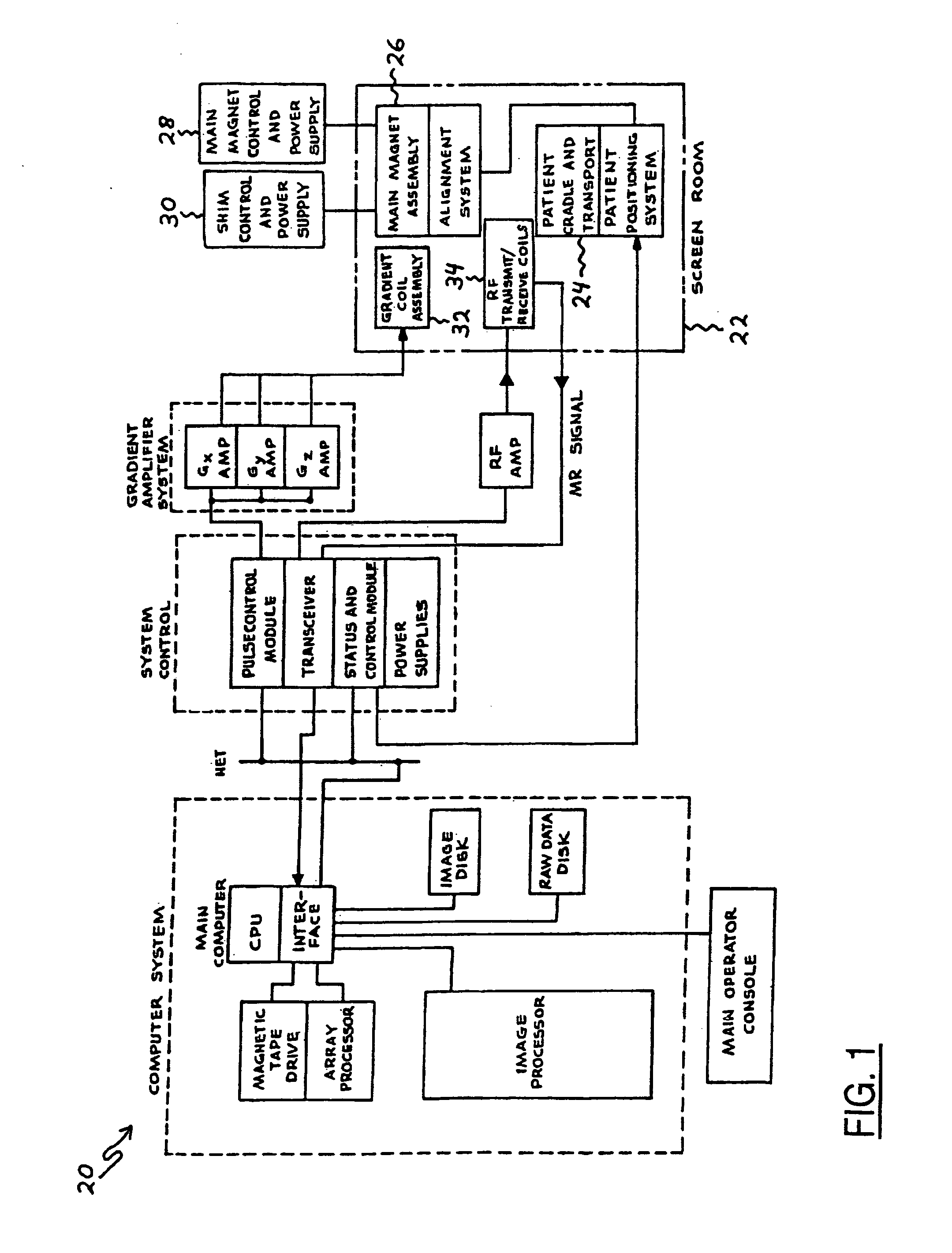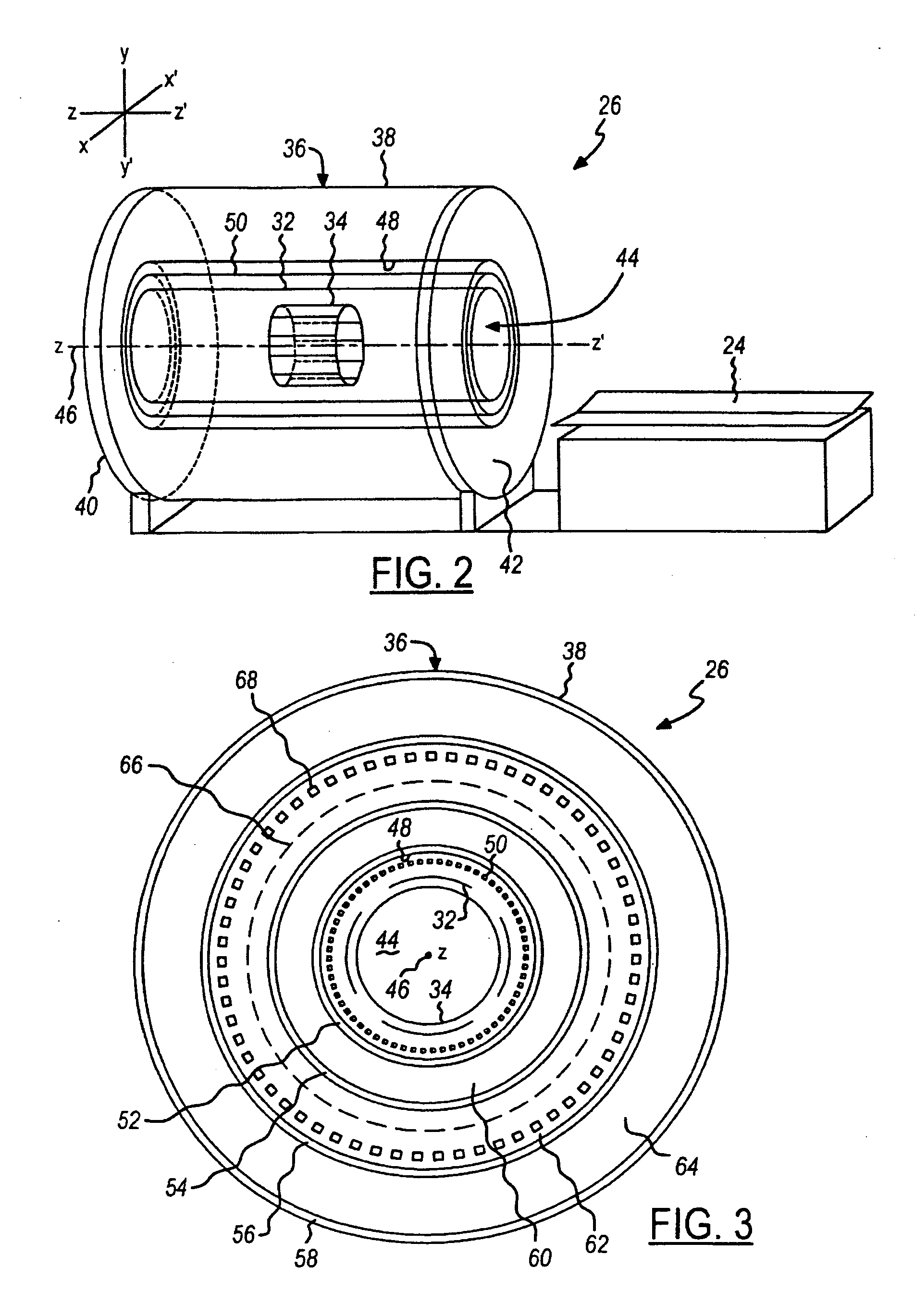Secondary coil circuit for use with a multi-section protected superconductive magnet coil circuit
a secondary coil circuit and superconductive magnet technology, applied in the field of superconducting or superconductive magnets, can solve the problems of constant circulating of electric current, burnt and permanently damaged parts of the mri system, and high cost of permanent damag
- Summary
- Abstract
- Description
- Claims
- Application Information
AI Technical Summary
Benefits of technology
Problems solved by technology
Method used
Image
Examples
Embodiment Construction
[0041]As an example, FIG. 1 shows a block diagram of a magnetic resonance imaging (MRI) system 20. Prior to operating the system 20, a patient is generally ushered into a shielded screen room 22. Once in the screen room 22, the patient is then situated in a supine position upon an electromechanical cradle-and-transport apparatus 24. After the patient is properly situated, the cradle-and-transport apparatus 24 is activated so as to move and thereby introduce the patient into an imaging bore defined within a main magnet assembly 26. Once in the main magnet assembly 26, the position of the patient is carefully aligned so as to focus in on an anatomic region of interest (ROI) within the patient's body. After being aligned, the patient is left immobilized within the main magnet assembly 26 in preparation for the system 20 to scan the patient.
[0042]When the MRI system 20 commences a scan operation, the designated region of interest (ROI) within the patient's body is immersed in a magnetic...
PUM
| Property | Measurement | Unit |
|---|---|---|
| critical temperature | aaaaa | aaaaa |
| critical temperature | aaaaa | aaaaa |
| current | aaaaa | aaaaa |
Abstract
Description
Claims
Application Information
 Login to View More
Login to View More - R&D
- Intellectual Property
- Life Sciences
- Materials
- Tech Scout
- Unparalleled Data Quality
- Higher Quality Content
- 60% Fewer Hallucinations
Browse by: Latest US Patents, China's latest patents, Technical Efficacy Thesaurus, Application Domain, Technology Topic, Popular Technical Reports.
© 2025 PatSnap. All rights reserved.Legal|Privacy policy|Modern Slavery Act Transparency Statement|Sitemap|About US| Contact US: help@patsnap.com



